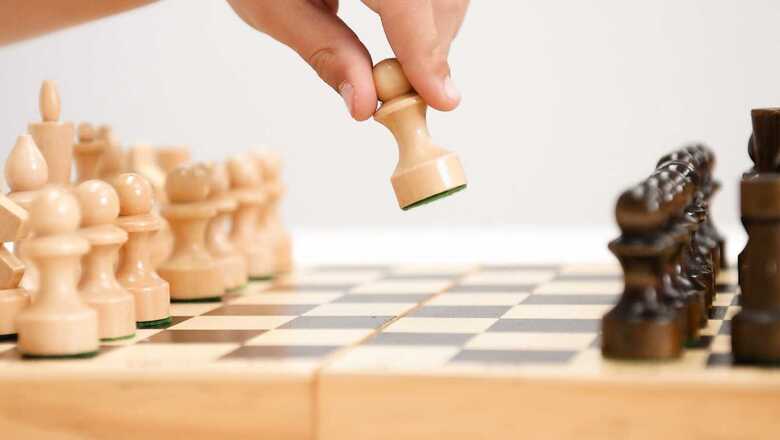
views
A game of chess takes strategy, patience, and problem solving skills to navigate it. The game promotes thinking of the highest order. This is where mathematics fits into the world of chess. It requires constant calculation with every move you make. Every element of a chess game is well-defined, which makes it theoretically possible to fully grasp it through logic and mathematics.
Chess has attained a cultural and intellectual significance and over the years many players have mastered the art through applying probability, statistics, and combinatorics to the game. Much like mathematics, this game requires mastery through repeated practice. Many teachers use examples from chess to make their students understand and solve math problems.
On the occasion of International Chess Day, which is observed every year on July 20, let’s take a look at some effective ways in which you can teach your child math concepts while improving their memory and concentration power using the game of chess:
Math’s coordinate system: Each square on the chessboard is identified by a unique coordinate pair, a letter, and a number. Each square has a unique identification of file letter followed by rank number. For example, the initial square of White’s king is designated as “e1”. This can be used to teach students coordinates in math. Using the chessboard as a reference, we can teach them how a specific point is represented using coordinates on a plane.
Use of geometry: Apart from the 64 alternating light and dark squares present in the chessboard itself, the board is further divided into ranks, tiles, and diagonals. Ranks decide where and how a piece can move. For example, the bishop can move diagonally. This is a fun opportunity to teach children that moving diagonally means drawing a line through a right angle which makes the movement 45 degrees. A horse can move 2 and ½ squares which means a straight line up to 2 tiles and turn 45 degrees in either direction. The queen can travel in any direction across squares, while the king can travel in any direction, but only from one square to another.
Solving complex mathematical problems: Learning to play chess makes you excellent at recognizing patterns and creating a catalogue of ideas in your heads. This will benefit children while solving complex maths problems.
Visual memory: Playing chess helps you strengthen your visual memory. Visual memory assists you to design a mental image for any object. It is also a key factor in memorizing math facts, patterns, and shapes.
Logic and reasoning skills: Playing chess helps you improve logical reasoning. As a player, you have to determine the best course of action within a given position. For example, the opponent makes a few moves that create noticeable problems for you. The problem with multiple difficulties within a given spot is identifying those problems and then deciding which problem needs to be tackled first. If a problem’s solution avoids material loss and the other avoids checkmate, avoiding being mated takes precedence.
Seasoned chess players have high levels of concentration. Concentration is another critical skill to execute any task efficiently. Using the game, kids can increase their concentration power which can help them focus their minds solely on the mathematical puzzle. Tablets and phones might have children’s attention these days, but it is time we encourage them to learn games like chess which not only improves their cognitive functioning but also engages them in play and fun.
— Authored by Manan Khurma, Founder & Chairman at Cuemath
Read all the Latest News, Breaking News, watch Top Videos and Live TV here.




















Comments
0 comment